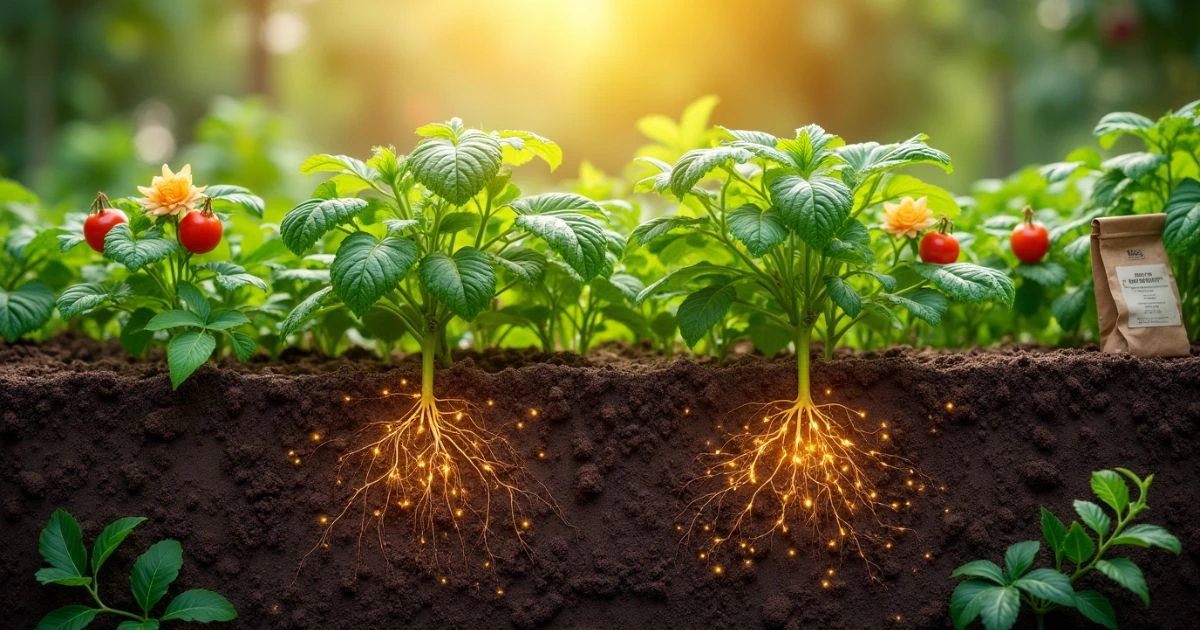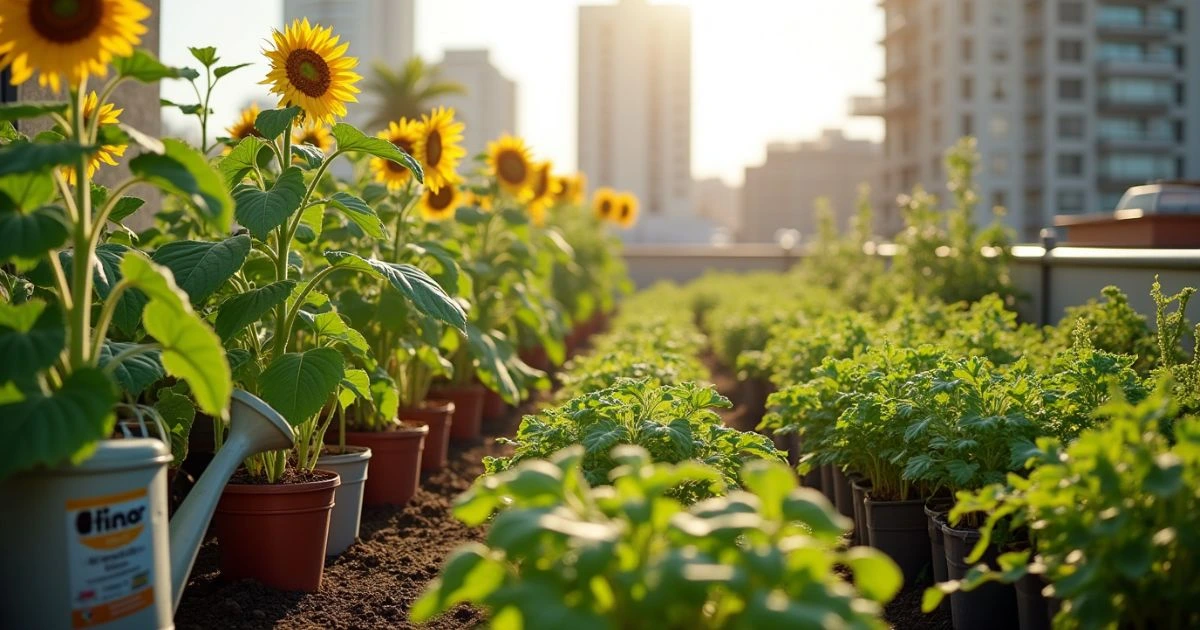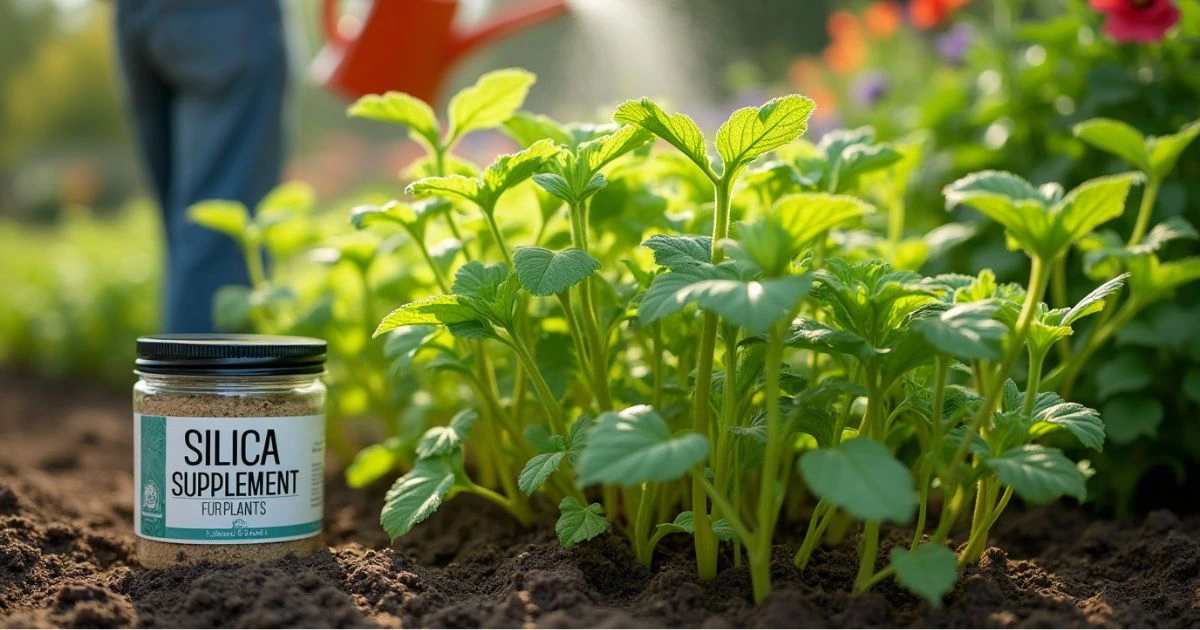Silica for Plants: 7 Powerful Ways It Boosts Growth
Imagine stepping into your garden to find plants standing tall, resilient against pests, drought, and environmental stress. Each leaf looks lush, each flower vibrant. The secret ingredient? Silica. This often-overlooked mineral is transforming gardens and delivering remarkable results.
In this article, you’ll discover seven powerful ways silica can boost your plants’ growth. Whether you’re a seasoned grower or just starting, understanding the benefits of silica can revolutionize your gardening approach. Let’s dive in.
Table of Contents
What Is Silica and Why Do Plants Need It?
Understanding Silica
Silica, also known as silicon dioxide, is a naturally occurring compound found in sand, quartz, and soil. For plants, it acts as a structural booster, strengthening cell walls and enhancing their overall resilience. While not classified as an essential nutrient, silica’s role in plant health is undeniable.
The Problem: Silica Deficiency
Modern agricultural practices and overworked soils often lead to a lack of natural silica. Without sufficient silica, plants can suffer from weaker stems, reduced growth, and increased vulnerability to pests and diseases. This is where adding silica—organic or liquid forms—to your gardening routine can make a huge difference.
7 Powerful Ways Silica Boosts Plant Growth

Enhances Plant Resilience: Silica strengthens plant cell walls, creating a protective barrier that wards off pests and diseases. You’ll notice fewer infestations and healthier foliage. Studies indicate that plants with silica applications experience up to 30% less pest damage compared to untreated ones. Additionally, silica’s reinforcement of cell walls can help plants withstand fungal infections, reducing the need for chemical fungicides.

Improves Drought Tolerance: When drought hits, plants with silica are better equipped to handle stress. Silica helps plants retain moisture, reducing water loss during dry spells. This means less wilting and more consistent growth, even in challenging conditions. Research shows that silica enhances the production of protective compounds like proline in plants, which further aids in stress tolerance and water management.

Strengthens Root Systems Strong roots are the foundation of healthy plants, and silica plays a crucial role in root development. It promotes deeper, more extensive roots that can access water and nutrients more effectively. In a side-by-side comparison, plants treated with silica displayed noticeably stronger root systems. Deeper roots also mean plants can anchor themselves better, reducing the risk of being uprooted during storms or heavy winds.

Boosts Nutrient Uptake Silica improves the absorption of essential nutrients like potassium and calcium. This not only enhances overall plant health but also leads to better flowering and fruiting. If you’ve struggled with nutrient deficiencies in your garden, silica can help bridge the gap. Moreover, silica reduces the risk of nutrient leaching in soils, ensuring that vital minerals remain available for plant roots over extended periods.

Encourages Faster Growth By supporting metabolic processes, silica accelerates growth rates in many plants. Whether you’re growing vegetables, flowers, or houseplants, incorporating silica into your routine can give your plants the boost they need to thrive. Faster growth also translates to quicker harvests for edible crops, making silica a must-have for productivity-focused gardeners.

Protects Against Environmental Stress Wind, heat, and heavy rain can all take a toll on your garden. Silica acts like armor, reducing the impact of these stressors and helping your plants recover faster. Gardeners who use liquid silica for plants often report greater resilience in harsh weather. Silica’s protective properties are particularly valuable in urban gardening, where pollution and temperature fluctuations can severely stress plants.

Improves Crop Yield and Quality For those growing fruits and vegetables, silica can lead to higher yields and better-quality produce. Farmers using organic silica for plants have seen increased production and tastier crops, proving that this mineral is a game-changer. Silica enhances the uniformity of fruits and vegetables, leading to more visually appealing harvests—a critical factor for both home gardeners and commercial growers.
How to Use Silica for Maximum Benefits
Choosing the Right Silica Product
Organic vs. Synthetic: Organic silica for plants is derived from natural sources, making it ideal for eco-conscious gardeners. Synthetic options, like liquid silica, are convenient and highly effective.
Popular products include silica powder, liquid concentrates, and soil amendments. Choose based on your gardening style and needs.
Application Tips for Gardeners
- Foliar Sprays: Mix liquid silica with water and apply directly to leaves. This method ensures rapid absorption.
- Soil Amendments: Add silica powder to the soil during planting to strengthen roots.
- Dosage: Follow the product’s guidelines to avoid over-application. A general rule is to apply every 2-4 weeks for best results.
Recipe for Organic Silica Fertilizer
Here’s a simple table outlining an organic silica fertilizer blend:
| Ingredient | Quantity |
|---|---|
| Rice hulls | 2 cups |
| Compost | 1 gallon |
| Azomite powder | ½ cup |
| Water | As needed |
Mix these ingredients thoroughly and apply around the base of your plants. This blend is an excellent source of organic silica and other nutrients.
Silica for Indoor Plants
Using silica indoors can make a significant difference in the health and growth of your houseplants. Liquid silica for plants offers an easy way to boost the resilience and vibrancy of your indoor greenery. By fortifying cell walls, silica protects your plants from the stress caused by inconsistent watering or temperature changes often found indoors.
Organic Silica for Hydroponic Systems
Hydroponic growers often struggle to replicate the natural soil environment. Organic silica products can bridge this gap, providing hydroponic systems with the mineral support plants need to grow strong roots and healthy foliage. Look for silica products designed specifically for hydroponics to optimize your results.
Silica in Companion Planting
Silica’s benefits extend beyond individual plants, making it a valuable ally in companion planting. When used in combinations like corn and beans or tomatoes and basil, silica enhances the resilience of both plants. This fosters mutual support against pests and environmental stress, promoting healthier gardens overall.
Silica’s Role in Sustainable Gardening
For eco-conscious gardeners, organic silica for plants aligns perfectly with sustainable practices. By improving plant health naturally, you reduce reliance on chemical fertilizers and pesticides, promoting a healthier environment for your garden and beyond.
Additional Tips and Strategies for Silica Application
Timing Matters
For the best results, apply silica during the early stages of growth. This ensures your plants benefit from strengthened cell walls and improved resilience right from the start. Incorporating silica early also supports robust root development, setting the stage for a thriving garden.
Combining Silica with Other Nutrients
Silica works synergistically with other essential nutrients. For instance, pairing silica with calcium and potassium enhances nutrient uptake and utilization. Consider adding silica to your fertilization schedule to maximize its benefits.
Monitoring Results
Keep a garden journal to track how silica affects your plants. Record growth rates, resistance to pests, and overall health improvements. Over time, you’ll notice trends that will help refine your silica application strategies.
FAQ: Everything You Need to Know About Silica for Plants
- What does silica do for plants? Silica strengthens cell walls, enhances nutrient uptake, and protects against stress, leading to healthier and more resilient plants.
- Is silica safe for organic gardening? Yes, organic silica products are widely used in sustainable gardening practices.
- How often should I apply silica? Apply every 2-4 weeks, depending on the product and plant type.
- Can silica help indoor plants? Absolutely! Liquid silica for plants works wonders on houseplants, promoting vibrant and robust growth.
- What are the best sources of silica? Common sources include rice hulls, diatomaceous earth, and specialized silica fertilizers.
Conclusion: Transform Your Garden with Silica
Incorporating silica into your gardening routine is one of the most impactful decisions you can make. From stronger roots to higher yields, silica offers countless benefits that help your plants thrive.
Silica for plants isn’t just a trend; it’s a proven way to boost growth, resilience, and overall plant health. By combining silica with other essential nutrients like potassium and calcium, you can create a powerful synergy that maximizes plant growth and health. For eco-conscious gardeners, organic silica stands out as a sustainable solution that aligns with environmentally friendly practices.
Start experimenting with silica products today and experience the transformative power they bring to your garden. Whether you’re using liquid silica for plants, organic silica fertilizers, or silica powder, you’re giving your plants the best chance to thrive. Ready to take the next step? Embrace silica and watch your garden flourish like never before!
With silica in your gardening toolkit, you’re not just growing plants—you’re cultivating a healthier, more vibrant ecosystem. From hydroponic systems to indoor plants and companion planting, silica is the key to unlocking your garden’s full potential. Make the change today and see the difference firsthand!


